Did you know that leeks are not only delicious but also offer several health benefits? These easy-to-grow vegetables are a fantastic addition to any garden, providing a mild, onion-like flavor that can be used in various dishes. But the benefits of growing leeks go beyond just their taste.
Leeks are low in calories and packed with vitamins A, C, and K. They are also a good source of dietary fiber and contain antioxidants that promote overall health. By growing leeks in your own garden, you can have access to fresh, nutritious produce, saving you money and ensuring that your meals are packed with flavor and goodness.
Key Takeaways:
- Leeks are easy to grow and have a mild, onion-like flavor.
- They are low in calories and rich in vitamins A, C, and K.
- Growing leeks in your garden gives you access to fresh, nutritious produce.
- Leeks can be planted in early spring or fall and require moist soil and regular feeding.
- Harvest leeks once they reach a suitable size and store them for extended use.
Benefits of Growing Leeks
Leeks are not only delicious but also offer several health benefits. They are low in calories and rich in vitamins A, C, and K. Leeks are also a good source of dietary fiber and contain antioxidants that promote overall health. Growing leeks can provide you with fresh produce right from your garden, saving you money and ensuring that you have access to nutritious food.
By cultivating leeks, you can enjoy the satisfaction of harvesting your own organic vegetables. This allows you to have control over the cultivation process, ensuring that no pesticides or harmful chemicals are used. With homegrown leeks, you can incorporate them into your meals, knowing that they are free from any potential contaminants.
Health Benefits of Leeks
Leeks offer numerous health benefits that make them a valuable addition to your diet. Here are some of the key advantages:
- Vitamins: Leeks are packed with essential vitamins, including:
- Vitamin A: Promotes healthy vision and proper immune function.
- Vitamin C: Supports the immune system and acts as an antioxidant, protecting cells from damage.
- Vitamin K: Aids in blood clotting and bone health.
- Fiber: Leeks are a good source of dietary fiber, which helps regulate digestion and may assist with weight management.
- Antioxidants: Leeks contain antioxidants, such as polyphenols and flavonoids, which help reduce inflammation and protect against chronic diseases.
Moreover, incorporating leeks into your diet can enhance the flavor and nutritional profile of your meals. They add a mild, onion-like taste to dishes, making them versatile and suitable for a variety of recipes.
“Growing leeks not only ensures a fresh and nutritious food source but also allows you to appreciate the health benefits they offer.”
With their nutritional value and culinary versatility, you can enjoy the benefits of growing leeks in your garden. By prioritizing leek cultivation, you can contribute to a sustainable and healthy lifestyle while relishing the pleasure of homegrown produce.
Soil Preparation for Growing Leeks
Proper soil preparation is crucial for successful leek cultivation. Leeks thrive in well-drained soil with a pH of 6.0 to 7.0. To create the ideal growing conditions, it’s important to start by improving the soil.
Here are some soil preparation tips for growing leeks:
- Add organic matter: Incorporate compost or well-rotted manure into the soil. This will help enrich the soil with essential nutrients and improve its structure. Leeks benefit from nutrient-rich soil, so incorporating organic matter is key to providing them with the necessary elements for healthy growth.
- Ensure good drainage: Leeks prefer well-draining soil, as waterlogged soil can cause root rot. If your soil tends to retain water, consider adding perlite or sand to improve drainage.
- Sunlight requirements: Leeks require a sunny spot in the garden, receiving at least 6 hours of sunlight daily. Choose a location that provides ample sunlight to promote strong growth and healthy development.
- Test soil pH: Leeks thrive in neutral to slightly acidic soil. Test the pH of your soil using a soil testing kit and adjust it if necessary. Adding lime can help raise the pH for acidic soil, while sulfur can lower the pH for alkaline soil.
Proper soil preparation sets the stage for successful leek cultivation. By creating well-draining, nutrient-rich soil and choosing a sunny location, you can provide the optimal growing conditions for your leeks.
“Good soil preparation is the foundation of a successful leek garden. By providing the right conditions, you’re giving your leeks the best chance to thrive and produce bountiful harvests.”
Planting and Care Tips for Leeks
When it comes to growing leeks, proper planting and care are essential for a successful harvest. Whether you’re a novice gardener or have some experience, these tips will help you cultivate healthy leeks that will thrive in your garden.
Starting from Seeds:
- Sow leek seeds indoors in trays or pots about 10-12 weeks before the last frost date.
- Plant the seeds ¼ inch deep in moist, well-draining seed-starting mix.
- Keep the soil consistently moist and provide adequate sunlight or artificial light for seedlings to grow.
- Once the leek seedlings are about 20cm high, they are ready to be transplanted into the garden.
Transplanting Leeks:
- Choose a sunny spot in your garden with well-drained soil that has been enriched with compost or well-rotted manure.
- Space the leeks 6 inches apart to allow room for proper growth and airflow.
- Plant the leek seedlings about 6 inches deep, ensuring that the roots are well-covered with soil.
Watering and Soil Moisture:
Leeks have shallow root systems, so it’s crucial to keep the soil consistently moist. Water the leeks regularly, especially during dry spells, to prevent the soil from drying out. This will ensure that the leeks have access to the water and nutrients they need for healthy growth.
Mounding Soil:
Mounding soil around the base of the leek stems as they grow will help blanch the stems, promoting tender and white growth. This can be done gradually throughout the growing season to create a mound that covers about two-thirds of the leek stem.
Feeding:
Regular feeding with a balanced fertilizer will provide the necessary nutrients for healthy leek growth. Use a fertilizer with a ratio such as 10-10-10 or 14-14-14 and follow the package instructions for application rates. Apply the fertilizer around the base of the leeks, avoiding direct contact with the foliage.
Benefits of Mounding Soil:
Mounding soil around leek stems helps blanch the stems, resulting in tender and white growth. It also protects the stems from sunburn and creates a loose, well-aerated soil environment.
| Plantd and Care Tips for Leeks | |
|---|---|
| Start leeks from seeds indoors and transplant when seedlings are about 20cm high. | Space leeks 6 inches apart for proper growth and airflow. |
| Keep the soil consistently moist to support shallow-rooted leeks. | Mound soil around the stems to promote tender and white growth. |
| Regularly feed leeks with a balanced fertilizer for optimal nutrition. |
Common Pests and Diseases of Leeks
When it comes to growing leeks, it’s important to be aware of the pests and diseases that can affect these flavorful vegetables. By understanding the common issues and implementing preventive measures, you can ensure the health and vitality of your leek plants.
Pests
One of the common pests that can attack leeks is the onion maggot. These small, white maggots feed on the roots of the leeks, causing stunted growth and wilting. To prevent infestations, I recommend practicing good garden hygiene by removing any infected plants or leaves. Regularly inspect your leek plants for signs of maggot activity, such as yellowing or wilting leaves.
“By removing infected plants and practicing organic pest control methods, you can safeguard your leeks against onion maggot infestations.” –Leek Gardening Tips
Another common pest that can affect leeks is the leek moth. These small, grayish-brown moths lay their eggs on the leaves of the leeks, and their larvae feed on the foliage, causing extensive damage. To prevent leek moth infestations, consider covering your leek plants with a fine mesh netting, which will prevent the adult moths from laying their eggs on the leaves.
Diseases
Leeks are also susceptible to various diseases, including leek rust and fungal infections. Leek rust appears as orange or yellow spots on the leaves, eventually causing them to wither and die. To prevent leek rust, I recommend practicing good cultural practices, such as crop rotation, to reduce the chances of infection. Additionally, ensure that your leek plants have good air circulation, as moisture can promote fungal growth.
Fungal and bacterial infections can also affect leeks, causing issues such as leaf rot. To prevent these infections, it’s important to practice proper sanitation in your garden. Remove any infected plants or leaves promptly and dispose of them properly to prevent the spread of disease.
| Pests | Diseases |
|---|---|
|
|
By being proactive in identifying and addressing potential pest infestations and diseases, you can ensure the health and productivity of your leek plants. Implementing good garden hygiene practices, using organic pest control methods, and maintaining proper sanitation will go a long way in protecting your leeks from common pests and diseases.
Harvesting and Storing Leeks
Harvesting leeks is an exciting milestone in your journey of growing leeks. When your leeks reach a suitable size, typically 1 inch or larger in diameter, it’s time to harvest them. Harvesting leeks is relatively simple and can be done by gently pulling or digging them out of the ground.
Once you have harvested your leeks, it’s important to clean them thoroughly to remove any soil or grit. Pay close attention to the spaces between the leaves, as they can trap dirt. Cleaning the leeks will ensure that they are ready for storage and culinary use.
Pro Tip: To make the cleaning process easier, you can trim off the roots and remove any damaged or wilted outer leaves.
After cleaning, you have a couple of options for leek storage. For short-term storage, you can keep the leeks in the refrigerator for up to a couple of weeks. Make sure to store them in a plastic bag or wrap them in a damp cloth to maintain their freshness.
For longer storage, you can preserve leeks by digging them out with the roots attached and trimming off the excess foliage. Packing them with moist packing material, such as damp sand, in a cool place will help ensure their longevity.
Table: Leek Harvesting and Storage
| Harvesting Method | Storage Duration |
|---|---|
| Refrigerator Storage | Up to a couple of weeks |
| Root-Attached Storage | Extended storage with proper packing |
By harvesting and storing your leeks properly, you can enjoy their fresh and flavorful taste even after the harvesting season.
Tips for Growing Leeks in Containers
Leeks can be successfully grown in containers, making them an excellent choice for those with limited garden space. Container gardening is a convenient and efficient way to grow leeks right on your patio or balcony.
To ensure the best results, here are some container gardening tips for growing leeks:
- Choose a deep container: Leeks have long roots, so it’s important to select a deep container that can accommodate their growth. A container with a depth of at least 12 inches is recommended.
- Use well-draining soil: Fill the container with a high-quality, well-draining potting mix. Leeks prefer moist but not waterlogged soil, so good drainage is essential. You can add some perlite or vermiculite to improve drainage.
- Ensure proper drainage: Make sure the container has drainage holes to prevent water from stagnating at the roots. Excess water can cause root rot and other problems.
- Find a sunny location: Place the container in a spot that receives at least 6 hours of sunlight per day. Leeks thrive in full sun, so choose a sunny location on your patio or balcony.
- Keep the soil moist: Leeks need consistent moisture to grow well. Water your container-grown leeks regularly to keep the soil evenly moist. Avoid overwatering, as it can lead to rot or fungal issues.
- Provide adequate nutrients: Leeks grown in containers may require more frequent feeding compared to those grown in the ground. Use a balanced fertilizer or organic compost to provide the necessary nutrients for healthy growth.
By following these container gardening tips, you can enjoy a bountiful harvest of leeks even if you have limited garden space. Container-grown leeks are not only practical but also add beauty and greenery to your outdoor space. Get started today and experience the joy of growing your own leeks!
Growing Leeks for Winter Harvest
Leeks are a great vegetable to grow for winter harvest. They have the advantage of being cold-tolerant, allowing you to leave them in the ground even during freezing temperatures. This means you can enjoy fresh leeks throughout the winter months, straight from your garden.
To ensure a successful winter harvest, it’s important to take a few key steps. One of these is mulching deeply around the leeks before a hard freeze. This will help to insulate the soil and protect the leeks from the harsh winter weather. It can also extend the harvest season, allowing you to continue enjoying leeks well into the colder months.
When it comes time to harvest your winter leeks, you have the flexibility to pick them as needed. This means you can leave them in the ground until you’re ready to use them, ensuring they’re as fresh as possible. The cold temperatures can actually enhance the flavor of the leeks, making them even more delicious.
So, if you’re looking to enjoy fresh leeks all winter long, don’t hesitate to try growing them for winter harvest. With a little extra care and attention, you can have a bountiful supply of leeks during the colder months.
Troubleshooting Common Leek Growing Issues
While growing leeks can be a rewarding experience, there may be a few common issues that you encounter along the way. By understanding and addressing these problems, you can ensure the successful cultivation of your leeks. Here are some troubleshooting tips to help you overcome common leek growing issues:
Soil Trapped Between Leaves
Leeks have long, narrow leaves that may sometimes trap soil between them. This can lead to potential problems such as rot and hinder the growth of your leeks. To prevent soil entrapment, consider using paper tubes around the young leek plants. Insert the tube around the stem, allowing the leaves to grow freely outside the tube. This will help keep the soil away from the inner leaves and promote better air circulation.
Slug Infestation
Slugs can be a nuisance for leek growers, as they feed on the tender leaves and can significantly damage the plants. To combat slug infestations, try implementing organic pest control methods. One effective technique is to create barriers around the leeks using copper tape or crushed eggshells. These substances create an unpleasant environment for slugs and deter them from reaching your plants.
Leaf Rot
Leaf rot in leeks can be caused by fungal or bacterial infections, leading to the deterioration of the leaves. To prevent leaf rot, it is important to provide adequate spacing between the leek plants. Proper spacing promotes good air circulation, reducing the risk of infection and increasing overall plant health. Additionally, avoid overhead watering, as wet foliage can contribute to the spread of fungal and bacterial diseases.
Leek Rust
Leek rust is a common fungal disease that affects the leaves of leek plants, causing orange or brown spots on the foliage. To prevent leek rust, choose rust-resistant varieties and practice good garden hygiene by removing any infected leaves or plants promptly. Additionally, ensure that your leeks have proper nutrition and are not stressed due to unfavorable growing conditions, as healthy plants are more resistant to diseases.
By taking these preventative measures and addressing any issues promptly, you can successfully troubleshoot common leek growing problems and ensure the healthy development of your leek plants.
| Common Leek Growing Issues | Troubleshooting Tips |
|---|---|
| Soil Trapped Between Leaves | Use paper tubes to prevent soil entrapment and promote air circulation. |
| Slug Infestation | Implement organic pest control methods, such as copper tape or crushed eggshells. |
| Leaf Rot | Provide adequate spacing between plants, avoid overhead watering, and maintain good air circulation. |
| Leek Rust | Choose rust-resistant varieties, practice good garden hygiene, and ensure proper nutrition for the plants. |
Conclusion
Growing leeks can be a rewarding experience, providing you with a fresh and flavorful vegetable right from your garden. Whether you have ample space in your garden or limited containers, with proper soil preparation, planting, and care, you can successfully cultivate leeks and enjoy their delicious taste in various dishes.
By following best practices and troubleshooting common issues, you can ensure a successful leek harvest. Proper soil preparation, including adding organic matter, and choosing a sunny spot with well-draining soil are essential for healthy leek growth. Regular watering, feeding, and keeping the soil moist will help your leeks thrive.
As you embark on the journey of growing leeks, remember to savor the process. Enjoy watching your leeks grow from seeds or transplants into beautiful plants. Soon, you’ll be able to harvest and savor the taste of your homegrown leeks, adding a fresh and flavorful touch to your culinary creations.

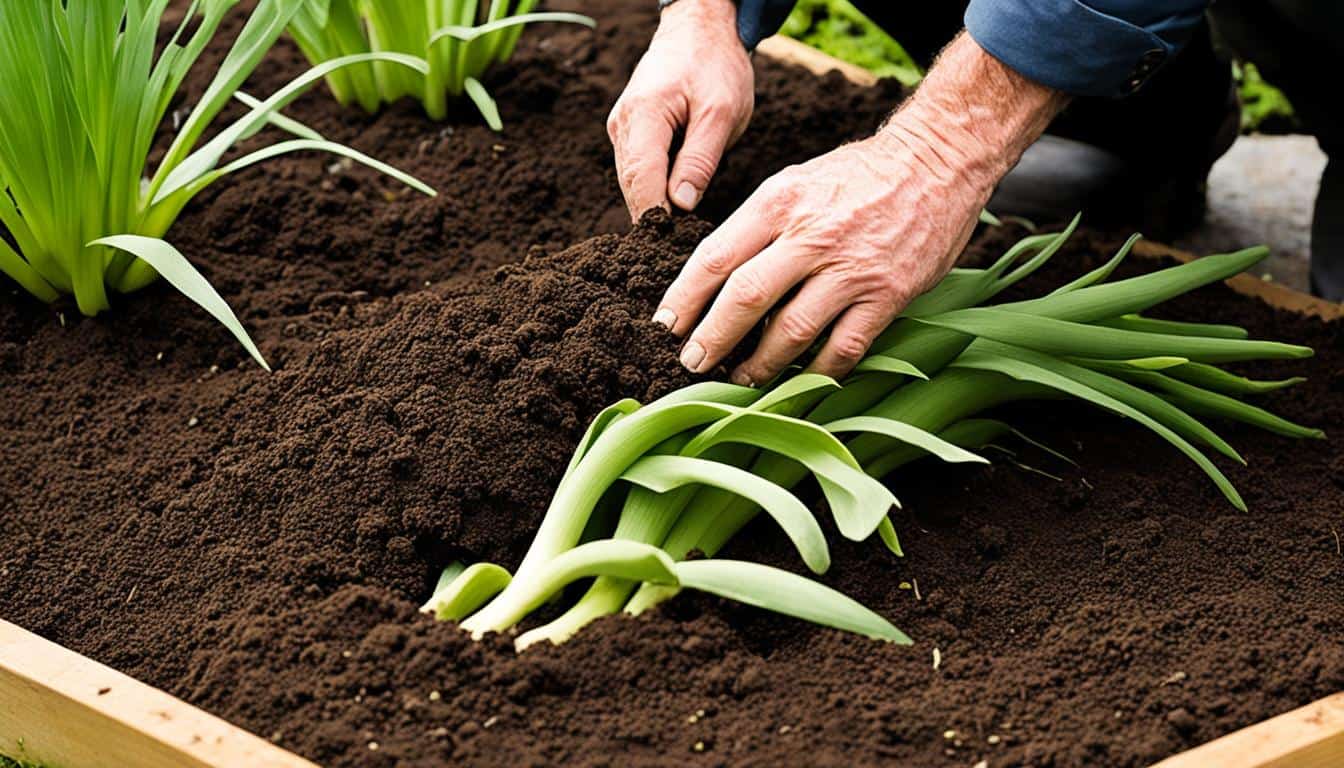
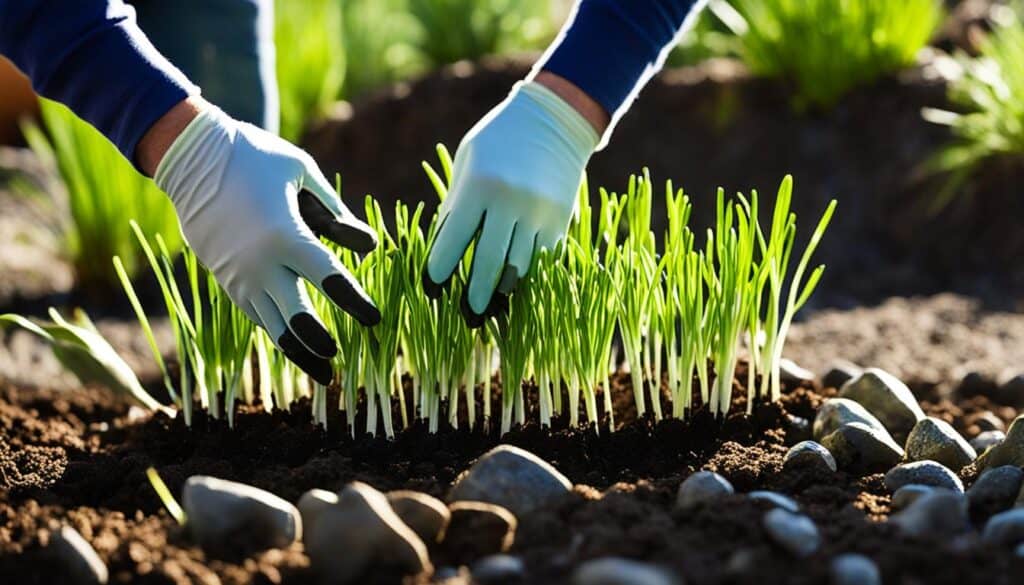

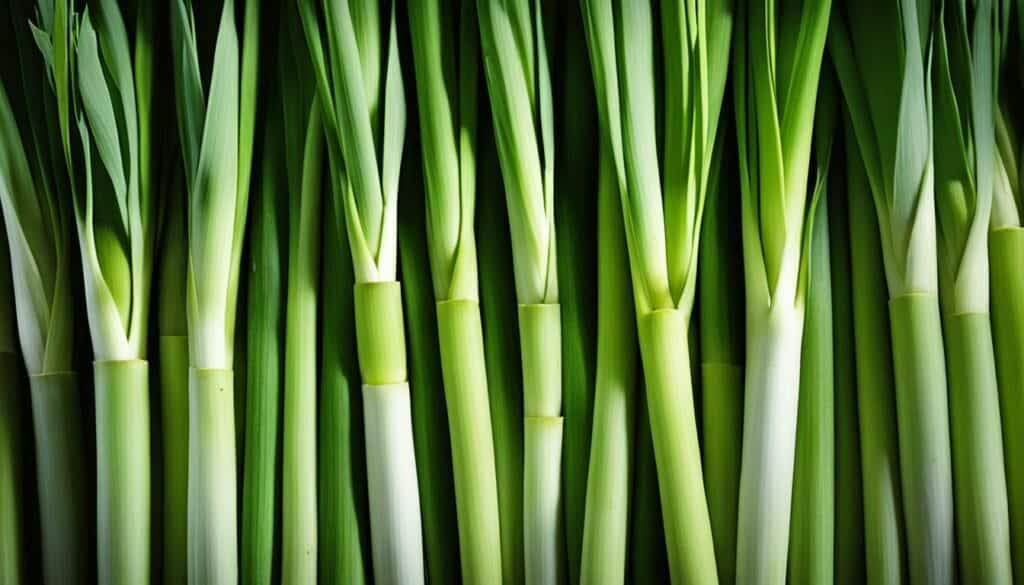
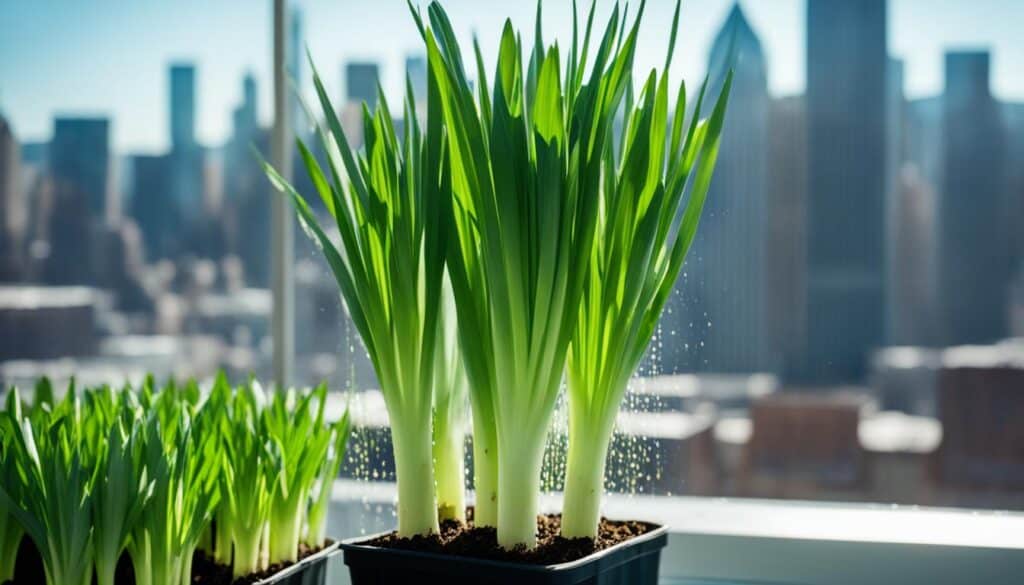
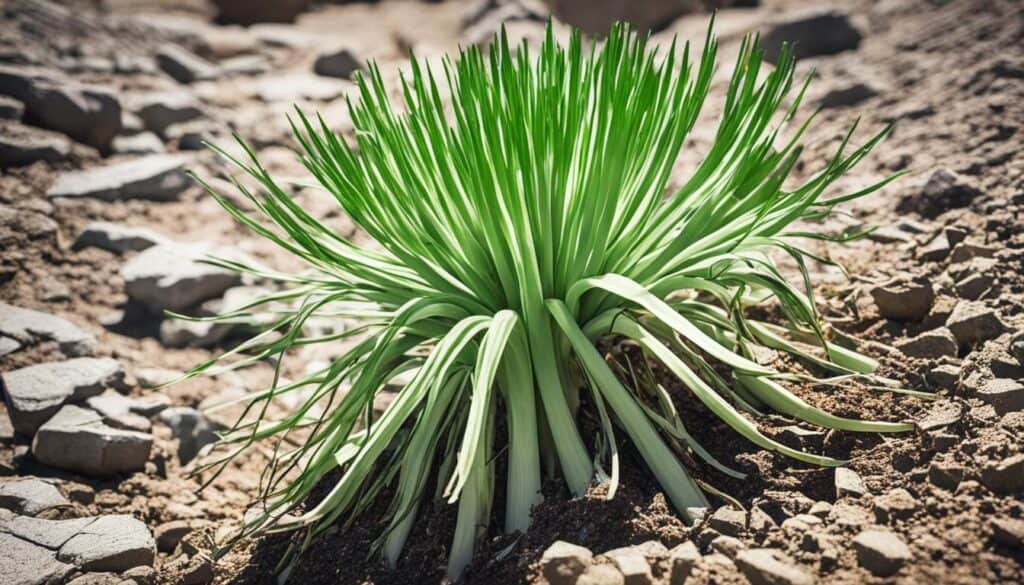



Leave a Reply